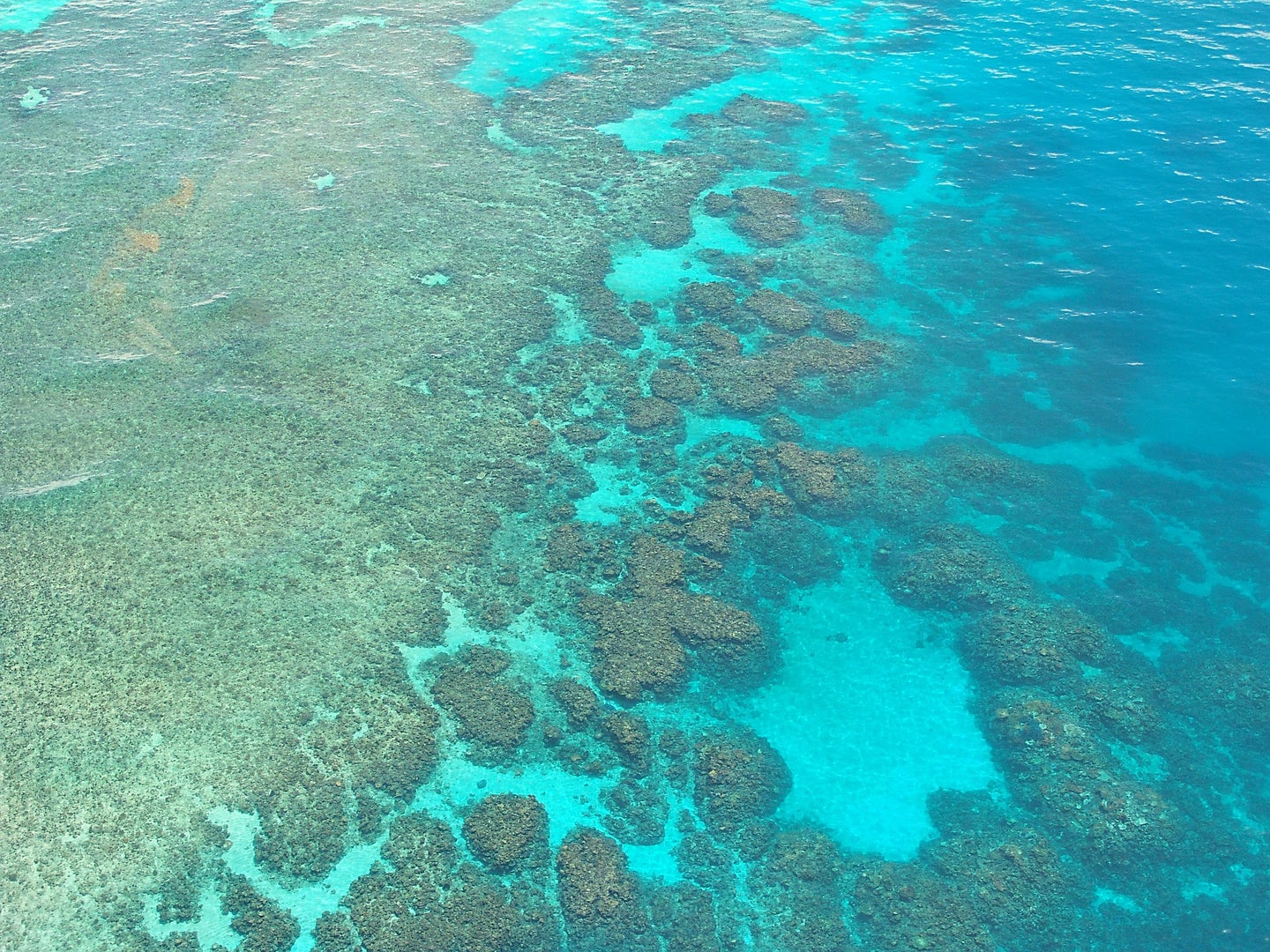The longest Great Barrier Reef study chronicles a century of devastation
The Australian reef has undergone major changes since 1928.

Almost 100 years ago, a group of scientists in the United Kingdom studied coral reefs in the Low Isles off the coast of Port Douglas, Australia. Equipped with a bulky metal diving helmet that more resembled a bucket, they spent hours underwater, creating detailed sketches—while submerged—with a wooden pencil on roughened glass so large, they could draw to scale. Most of these were illustrated by a single woman diver on the team. These sketches depicted complex and diverse communities with a variety of corals—massive ones characterized by their boulder-like shape, branching tree-like corals with outreached arms, and soft species that unfurl in the water like grass.
Known as the Great Barrier Reef Expedition of 1928, its crew spent a year exploring and documenting the Low Isles. Their precise recordings of each community’s location allowed modern day marine biologists to retrace the expedition’s steps. They visited the original seven locations in 2004, 2015, and once more in 2019 to measure the number of species, the cover and size of coral colonies, and temperature amongst other metrics. These were the same factors observed in 1928 and again in 1954 when one of the original voyage’s members revisited the reef. Their work, published last week in Nature Communications, is now the longest ecological survey of coral reefs to date.
The study, which was a combined effort by researchers at Bar-Ilan University, Inter university Institute for Marine Science in Israel, and the University of Queensland in Australia, found that the same reef communities have undergone a massive decline in the abundance and types of corals due to global and local environmental stressors. Its results confirm what other recent studies have found: that coral reefs are under intense stress, and there’s little hope they can ever return to their original state.
“We found several places where no corals could be found, and these were described as beautiful reefs before,” says Maoz Fine, a marine ecologist at Bar-Ilan University in Israel and one of four scientists involved in the study. “Nowadays, there is nothing there. No corals. No invertebrates. This was really sad to see at one site after the other.”
The team focused on two types of coral sites: intertidal and subtidal. Intertidal locations are home to communities affected by the rise and fall of the tides. Meanwhile, subtidal sites are ones always covered by water, even at low tide.
The study found that intertidal communities were the most affected, with four of them almost entirely devoid of corals. Over the same time period, the coral cover in subtidal communities did not consistently decline. Rather, they experienced what the study defines as major phase-shifts.
In ecology, a phase-shift represents a community’s (a group of species living together) transition from one stable state to another. For example, a reef can be dominated by branching corals and hard species of corals with soft ones in the space between. It is a rich community that has existed for a long time. Following a phase-shift, the reef exists in a different state in which microalgae or soft corals might now dominate. It is still stable, but dramatically different from the original.
Ecosystems try to resist these shifts, tending to remain in one state. Only major environmental changes can spur these major phase-shifts.
“We often find it very difficult to bring back a degraded state to the original one,” says Fine. “The long-term implications of these changes highlight the importance of avoiding phase-shifts in coral reefs which may take many decades to repair, if at all.”
Due to these major phase-shifts, the subtidal communities observed saw a decline in species richness—a measure of the number of different species at a given site. According to the study, these subtidal areas are home to more massive corals than the branching corals of the past and saw an increase in soft corals. Because relationships in coral reef communities are so specialized, the decline in coral variety results in a decline in non-coral species, creating an overall loss of biodiversity. At one site, there was a fivefold increase in the number of soft coral colonies from 1928 to 2004. Species richness was 50 percent lower in 2004 and 2015 when compared to the 1928 and 1954 expedition notes. By 2019, researchers measured a further drop in richness of 37 percent.
The study also found that sea temperatures increased by about 0.7 degrees celsius since 1928—a sign that the climate is warming. Global environmental stressors such as an increase in temperatures alongside local stressors such as increased flooding and fertilizer runoff are the culprits behind the phase-shifts.
As the population along the Australian coast increased, so did agricultural activity. Fertilizers from farms run off into the reef, resulting in high nutrient concentration—an environment where algae takes over, killing the coral beneath. In addition, forty drainage basins comprise the Great Barrier Reef Catchment area—a place where water collects as it drains into the Great Barrier Reef. According to a report issued by the Great Barrier Reef Marine Park Authority, urban development and agricultural expansion has altered the flow of water in these catchment areas, causing reefs to flood. Combined with rising sea levels, this can result in reef drowning, where the water becomes too deep that the coral can’t get the sunlight they need.
“For these reefs to recover, we need to remove local disturbances,” says Fine. “This means preventing floods, and any chemical that comes from land might jeopardize the effort of these reefs to bounce back.”
